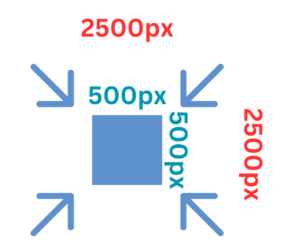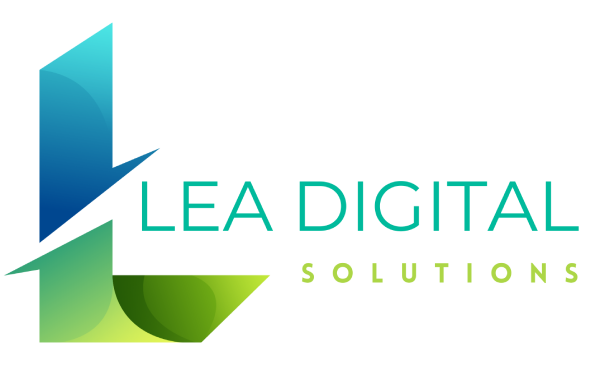Understanding and implementing image optimization can significantly improve your content’s performance in terms of search engine visibility and user engagement.
Understanding Image Optimization
Image optimization involves adjusting visuals to ensure they are of high quality and in the appropriate format, size, and resolution to promote user interaction. It also includes accurately using metadata for images, which helps search engines understand the visuals and the context of the content they are part of.
According to a 2018 study by HTTP Archive, images were responsible for 21% of the total size of a typical webpage. This percentage is likely higher today due to the increased use of visuals on the internet. Images are among the largest elements on websites and have a substantial impact on the loading speed of a site.
Optimizing the size of images without compromising their quality can lead to faster page loading times and an improved user experience. Such enhancements are beneficial for your website’s ranking on search engines, which can lead to increased user engagement, higher conversion rates, and greater customer loyalty.
Pro Tip: Efficiently managing your images not only boosts your website’s performance but also conserves server storage space. This efficiency aids in making website backups quicker and more efficient.
Adjust Your Image Dimensions
There’s a distinction between image size and file size. Image size pertains to the dimensions of a photo (for example, 1024×680 pixels), whereas file size refers to the amount of storage space it occupies (like 350 kilobytes).
Images that are high in resolution and have larger dimensions can significantly slow down your webpage’s loading time. While these high-quality images are suitable for print, they need to be resized for optimal web use.
Pro Tip: Explore this guide for optimal image sizes across various social media platforms.
Save the Right Format
The formats PNG, JPEG, and GIF each offer unique advantages. For images rich in color, JPEG is the preferred option, while PNG is ideal for simpler images.

Adjust Compression Levels
The balance between an image’s file size and its quality is pivotal; generally, a smaller file leads to lower image quality. It’s beneficial to experiment with various file types and compression levels to discover the optimal setting for each image. Tools like Adobe Photoshop offer a “save for web” feature, which adeptly reduces file size while striving to maintain the best possible image quality.
For those not using Photoshop, a plethora of tools and plug-ins are available to assist in image optimization:
Image Optimization Tools
- Affinity Photo: A professional photo editing tool.
- FileOptimizer: A versatile file compression tool.
- Gimp: A free, open-source image editor with broad capabilities.
- ImageOptim (Mac only): A tool focused on reducing file sizes without compromising quality.
- JPEG Mini: Specializes in reducing JPEG file size without affecting quality.
- Kraken: Offers bulk image compression.
- Photopea: A web-based photo editor that supports various file formats.
- Pixlr: Known for its JPEG optimization capabilities.
- OptiPNG: Optimizes PNG images for size without losing quality.
- Trimage: Removes unneeded metadata from images, compressing them without affecting the visual quality.
WordPress Plugins for Image Optimization
- EWWW Image Optimizer: Automatically optimizes images uploaded to WordPress.
- ImageRecycle: An image and PDF optimization plugin.
- Optimus Image Optimizer: Reduces image file sizes while maintaining quality.
- ShortPixel: A comprehensive image optimization plugin.
- TinyPNG: Uses smart lossy compression techniques for reducing PNG file sizes.
- WP Smush: Optimizes images without a visible drop in quality.
- Yoast SEO: While primarily an SEO tool, it also has features for optimizing images.
Testing Site Speed
Once your images are optimized, assessing whether your website’s loading times meet the mark is crucial.
Employ any of these tools to evaluate your site’s speed:
- GTmetrix: Provides insight into your site’s performance and offers optimization suggestions.
- Google PageSpeed Insights: Analyzes the content of a web page, then generates suggestions to make that page faster.
- Pingdom: Offers a range of website performance and monitoring tools, including speed testing.
- WebPageTest: A more detailed tool for testing site speed from multiple locations around the world.
- WebWait: A straightforward tool for measuring how long it takes for a webpage to load.
Pro Tip: If your website’s content updates frequently, it’s wise to regularly monitor your loading times to ensure optimal performance.
Use Alt Tags
Alt tags are simple text descriptions that you add to images on your website. They help people who can’t see the images understand what’s there. This is really helpful for people using screen readers because of visual problems. Alt tags also help search engines know what your images are about, which can help your website show up in search results. When you add alt tags, use easy words that describe the picture and include keywords if you can. This makes your website more friendly for everyone and can help more people find it.
Pro Tip: Include keywords related to your brand in alt tags to help more people find your site. But remember, don’t overdo it with too many keywords.
Choose The Right Name for Your Image Files
When saving images for your website, the names you choose for the files matter more than you might think. Instead of leaving them as default numbers or vague descriptions, rename your images with clear, descriptive titles. This not only helps you keep your files organized but also improves your website’s SEO. Search engines pay attention to file names, so including relevant keywords can help your images show up in search results. For example, if you have a bakery website, naming an image “chocolate-chip-cookies.jpg” rather than “image1.jpg” gives search engines and users a clear idea of what the image is about. This simple step can make your website more discoverable and user-friendly.
Add Captions
Captions, the text that appears below images, play a crucial role in engaging your website’s visitors. They provide context and background, making your content more accessible and informative. Including captions can enhance the viewer’s understanding, especially when the image alone might not convey its full significance. For SEO purposes, captions are valuable because they’re another opportunity to incorporate relevant keywords that can improve your site’s visibility in search results. A well-crafted caption can stop a reader in their tracks, encouraging them to spend more time on your page, which search engines interpret as a sign of valuable content. Whether it’s a brief explanation, a quote, or a call to action, a caption can add depth to your images and help tie them back to your overall message or theme.
Make Images Mobile Friendly
It’s really important to make sure your images look good on phones and tablets, not just on computers. A lot of people use their phones to go online, so your pictures should load fast and fit nicely on small screens. You can use special website design tricks so that your images automatically adjust to whatever size screen someone is using. Also, try to keep your image files small so they can load quickly, even on slower mobile internet. This way, everyone can enjoy your site, no matter how they get online.
Use Site Maps
Using site maps is an effective way to help visitors and search engines find their way around your website. A site map is essentially a roadmap of your website, listing all the pages and content it contains. For users, it improves the ease of navigation, allowing them to find the information they need quickly. For search engines, it acts as a guide to understand your website’s structure and index your content more effectively, potentially improving your site’s search rankings. Adding a site map is a straightforward yet impactful step in making your website more accessible and visible online. Whether you’re building a new site or updating an existing one, don’t overlook the importance of a well-structured site map.
Wrapping Up
Getting your website’s images right plays a big part in making your site more attractive, easier to use, and better ranked by search engines. From picking the correct file names and sizes to making sure your images are ready for mobile users and using alt tags correctly, these steps are crucial for improving your site. But, managing all these details can get complicated. If you’re looking for professional help to boost your website’s performance and make it more visible online, Lea Digital Solutions has got your back. Our team specializes in all things digital marketing, including making sure your images do exactly what they need to do for your site. Let us help you make your website the best it can be.


0 Comments